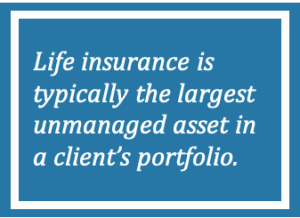About Pacific Prime
Table of ContentsSome Ideas on Pacific Prime You Should KnowThe Facts About Pacific Prime RevealedSome Known Factual Statements About Pacific Prime Pacific Prime Can Be Fun For AnyoneThe 10-Minute Rule for Pacific Prime

This is due to the fact that the data were accumulated for a period of strong financial performance. Of the estimated 42 million individuals who were without insurance, all yet regarding 420,000 (about 1 percent) were under 65 years old, the age at which most Americans become qualified for Medicare; 32 million were adults in between ages 18 and 65, around 19 percent of all grownups in this age group; and 10 million were kids under 18 years old, regarding 13.9 percent of all children (Mills, 2000).
These quotes of the number of individuals uninsured are produced from the annual March Supplement to the Current Populace Survey (CPS), performed by the Census Bureau. Unless otherwise kept in mind, national quotes of people without health and wellness insurance policy and percentages of the populace with different type of coverage are based on the CPS, one of the most extensively used source of quotes of insurance policy protection and uninsurance prices.
The Definitive Guide to Pacific Prime

Still, the CPS is particularly helpful since it creates annual quotes fairly swiftly, reporting the previous year's insurance coverage estimates each September, and because it is the basis for a constant collection of price quotes for greater than 20 years, permitting for evaluation of trends in coverage gradually. For these factors, along with the considerable use the CPS in other research studies of insurance policy protection that exist in this record, we count on CPS estimates, with limitations kept in mind.

The estimate of the variety of uninsured individuals broadens when a population's insurance standing is tracked for a number of years. Over a three-year duration beginning early in 1993, 72 million people, 29 percent of the U.S. https://triberr.com/pacificpr1me. populace, lacked insurance coverage for a minimum of one month. Within a single year (1994 ), 53 million people experienced a minimum of a month without coverage (Bennefield, 1998a)
6 out of every 10 without insurance grownups are themselves utilized. Although functioning does boost the possibility that one and one's relative will certainly have insurance policy, it is not a warranty. Even members of families with 2 permanent breadwinner have nearly a one-in-ten possibility of being uninsured (9.1 percent without insurance rate) (Hoffman and Pohl, 2000).
Excitement About Pacific Prime
New immigrants represent a substantial percentage of people without wellness insurance coverage. One analysis has actually connected a substantial portion of the current development in the dimension of the U.S. without insurance population to immigrants who got here in the nation between 1994 and 1998 (Camarota and Edwards, 2000). Recent immigrants (those that came to the United States within the previous 4 years) do have a high rate of being without insurance (46 percent), but they and their kids make up just 6 percent of those without insurance policy nationally (Holahan et al., 2001).
The connection in between medical insurance and access to care is well established, as documented later in this phase. The partnership between health insurance coverage and health and wellness outcomes is neither direct neither straightforward, an extensive clinical and wellness solutions research study literature web links wellness insurance coverage to better accessibility to care, much better quality, and improved individual and populace health standing.
Levels of analysis for examining the results of uninsurance. It focuses particularly on those without any type of health insurance policy for any type of size of time.
Examine This Report on Pacific Prime
The issues faced by the underinsured are in some areas comparable to those dealt with by the uninsured, although they are usually much less serious. Health insurance policy, nevertheless, is neither required nor enough to gain accessibility to clinical services. The independent and straight impact of health and wellness insurance coverage on access to health services is well developed.
Others will obtain the wellness treatment they need even without medical insurance, by spending for it expense or seeking it from service providers that use treatment totally free or at extremely subsidized prices. For still others, medical insurance alone does not guarantee invoice of treatment since of other nonfinancial obstacles, such as a lack of healthcare carriers in their community, minimal accessibility to transport, illiteracy, or linguistic and social distinctions.
Indicators on Pacific Prime You Need To Know
Formal research regarding without insurance populaces in the United States dates to the late 1920s and early 1930s when the Board on the Price of Medical Care check out here generated a collection of records concerning funding physician office sees and hospitalizations. This problem ended up being significant as the varieties of medically indigent climbed up throughout the Great Clinical depression.